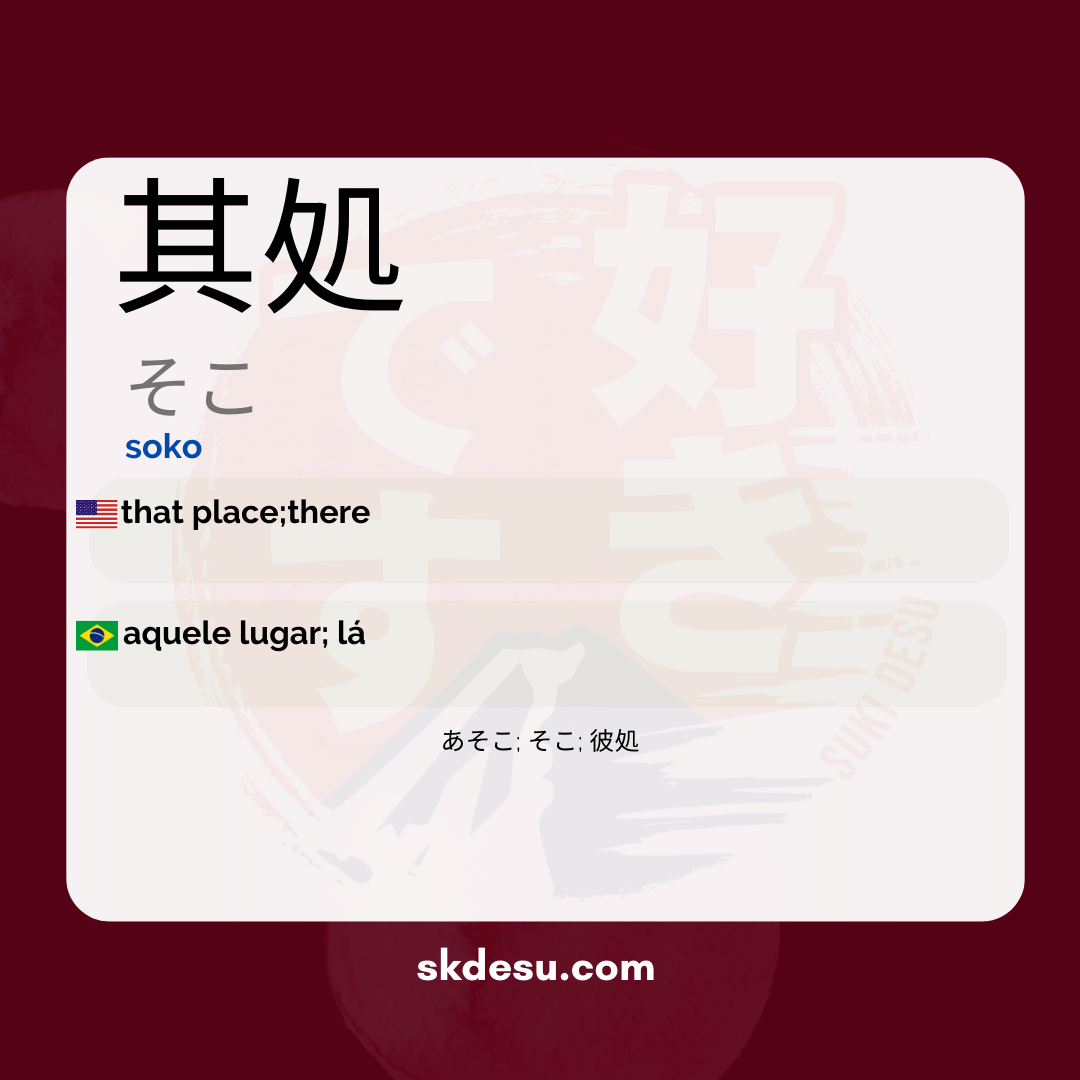Translation and Meaning of: 其処 - soko
The Japanese word 其処[そこ] is a common term in everyday language, but it can cause confusion for those starting to study Japanese. Its main meaning is "there" or "over there," indicating a place relatively close to the listener but not to the speaker. In this article, we will explore how this word is used, its origin, its kanji writing, and some tips for memorizing it efficiently. If you want to better understand the usage of 其処[そこ] in sentences or its relationship with Japanese culture, keep reading!
Meaning and usage of 其処 [そこ]
そこ (soko) is a demonstrative pronoun that refers to a place not very far from the person you are speaking to, but is far from the speaker. In English, it would be equivalent to "there" or "that place." For example, if someone points to an object near you, but not near them, they might say "そこにあります" (it's there).
It is worth noting that, although it is a simple word, its use can vary depending on the context. In informal conversations, Japanese people often omit particles such as "に" or "で" when the meaning is already clear. Furthermore, 其処[そこ] can be used metaphorically in some cases, such as to refer to a specific point in a discussion.
Writing and origin of kanji
The kanji writing of 其処 [そこ] is composed of two characters: 其 (meaning "that" or "this") and 処 (which can mean "place" or "point"). Although this form is correct, in modern Japanese it is more common to see the word written only in hiragana (そこ), especially in informal texts or everyday dialogues.
It is interesting to note that the kanji 其 is an archaic character that rarely appears alone in contemporary Japanese. It is more often found in compound words or fixed expressions. On the other hand, the kanji 処 appears in other terms such as 処理 (shori - processing) or 処分 (shobun - disposal), showing its relation to the idea of location or action in a place.
Tips for memorizing and using correctly
An effective way to solidify the meaning of 其処[そこ] is to associate it with the demonstrative system in Japanese. It is part of the "ko-so-a-do" series, where ここ (here), そこ (there), and あそこ (over there) indicate progressive distances relative to the speaker and the listener. Creating simple sentences like "そこを見て" (look there) helps to internalize its usage.
Another useful tip is to pay attention when listening to dialogues in anime or Japanese dramas, as そこ is often used in everyday conversations. Observing how characters use the word in different situations can help you better understand its nuances. Over time, you will naturally start using it with more confidence in your own sentences.
Vocabulary
Expand your vocabulary with related words:
Synonyms and similar words
- あそこ ( asoko ) - there
- 彼処 ( kachira ) - there (used in more formal or literary contexts)
Romaji: soko
Kana: そこ
Type: pronoun, adverb
L: jlpt-n1, jlpt-n5
Translation / Meaning: that place; there
Meaning in English: that place;there
Definition: This place, this spot.
Quick Access
- Vocabulary
- Writing
- Sentences
How to Write in Japanese - (其処) soko
See below a step-by-step guide on how to write the word by hand in Japanese. (其処) soko:
Example Sentences - (其処) soko
See below some example sentences:
Nenhum resultado encontrado.
Other Words of this Type: pronoun, adverb
See other words from our dictionary that are also: pronoun, adverb

